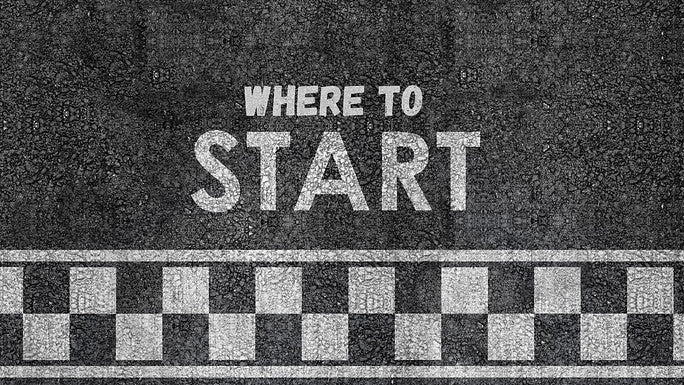
Where To Start?
So you’ve decided to try writing?
Look in the rearview mirror. See that dark, suited figure waving goodbye as you speed into the abyss.
That’s your sanity.
Don’t worry. You don’t need it.
Once you’ve scratched out a few short stories and received appropriate encouragement from the friends and family you’ve forced to read them, the next step is to start submitting!
This step can be overwhelming.
Sending your writing into the world is scary. Will it be able to fend for itself? Will the editors be as nice as your friends and family? Will they tell you your writing is trash and you should have taken up stamp collecting?
Yes, maybe, and no.
Even editors won’t condemn people to a life of stamp collecting.
So where do you start?
There are two main avenues for getting a story published in today’s writing world: magazines and anthologies. Calls and submission instructions for both can be found online, but there are some things you need to understand before you put your story in the slush pool.
1. Polish Your Work
No one writes perfect first drafts.
Second drafts need work too.
As you gain experience, you might get a good third draft on occasion.
But in most cases, you need to put your stories through the wringer. In my process, as a writer with fifteen-plus years of experience, a story doesn’t get submitted until it’s been rewritten, critiqued by a peer, and gone through at least three rounds of editing.
But why do I have to edit if the place I’m submitting to has an editor?
Because editors don’t want to create additional work for themselves. They want pieces that require them to do a minimal amount of work before they can publish them.
In the slush pool, you’re competing against dozens, if not hundreds of other writers. The more you make your piece shine, the greater the chance of acceptance.
2. Anthology vs. Magazine
For new writers, I recommend starting by submitting to anthologies.
Why?
There are a few reasons. Anthologies take a lot of the guesswork out of submitting, so you can write with a better idea of what the editor is looking for. They also accept more pieces than most magazines, so you have a better chance of acceptance.
Magazines are fantastic, and if you have a chance to submit to one (particularly if they take simultaneous submissions), go for it. But know that getting an acceptance is going to be more challenging.
3. Finding Calls
There are many groups on social media dedicated to publishing writing calls. Just search “Open Calls [your genre here].”
There are also online lists curated by benevolent souls that keep updated lists of anthologies and magazines looking for submissions. Angelique Fawns, Publishing…and Other Forms of Insanity, and The Horror Tree are good sources. Finally, there are online submission databases like Duotrope and Submittable that not only let you search for markets, but let you track your submissions.
You can also follow the social media of publishers, though this may not bring you results as frequently—Undertaker Books usually has 3-4 anthology calls a year. But, we also post submission tips and other things you may benefit from.
Once you have your sources, make a calendar of calls you plan to submit to in order to help you track deadlines. Be sure to note the source of the call and the publisher’s website in case you need to go back for more details (I use a Google calendar for this).
4. Formatting
Most submissions today ask for modern Shunn formatting, or a variation of it (I ask authors to increase the font size from 12 to 14). Learning to format properly (or investing in a program like Scrivener that does it for you) will help you stand out.
We had almost 100 submissions to our recent Wandering Souls Edition call. I’d be surprised if a quarter of them were formatted correctly. So as an editor, when I opened a file that was exactly what I wanted, I breathed a sigh of relief and was in a more benevolent mood as I considered the piece.
Editors are human. Use that to your advantage.
Format your piece how they ask for it. If they ask for it in a word doc, don’t submit a PDF (never submit a PDF unless the call specifically instructs you to—most editors will reject PDFs without even looking at them). Don’t get creative here looking to stand out—let your story shine by doing what the editor asks.
5. Move On
Once you submit, it’s gone. Into the abyss. Someday, you’ll get a reply, but that probably won’t be today. Breathe a sigh of relief, and get to work on your next submission.
